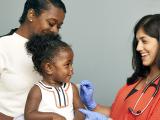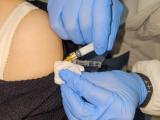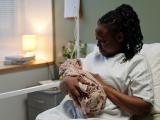At the national level, preparedness for health emergencies improved slightly, but an annual index to track progress found worrying discrepancies at the state level that create a widening gap in the years ahead, especially in low-income areas and those that are vulnerable to public health emergencies.
The National Health Security Preparedness Index (NHSPI) was released today by the Robert Wood Johnson Foundation (RWJF), which funds the effort. Originally developed by the Centers for Disease Control and Prevention (CDC), the assessment is a collaborative effort by many groups that analyzes 130 different measures. Taken together, it provides a comprehensive snapshot of national health security and preparedness.
On a 10-point scale, it gave the United States an overall score of 6.8 for 2016, up from 6.7 last year and from 6.4 in 2013, when the index began.
Alonzo Plough, PhD, MPH, chief science officer and a vice president at RWJF, said today in a news release that the data highlight strengths and gaps. "Improving health security and preparedness is important for all communities across the country. In our highly mobile country, national emergency preparedness depends on having high levels of protection in every state, city, and region."
Of six main dimensions—ranging from mobilizing resources after health incidents to involving stakeholders during crises—the nation as a whole improved except for one area: the ability to prevent health impacts from environmental or occupational hazards. That area is the only one showing decline from 2013
Anna Hoover, PhD, MA, deputy director of the index and assistant professor of preventive medicine and environmental health at the University of Kentucky, told CIDRAP News that this category reflects food and water safety and environmental monitoring and that, for example, some states' public health laboratories have scaled back air quality monitoring, and it's not clear if they've dropped their programs or transferred them to other entities.
On the other hand, an area that continues to show strong gains—up 16% since 2013—is mobilizing stakeholders to work together during crisis times. "Communities are doing better with cross-sector collaboration; that's promising to see," Hoover said.
Probing state disparities, seeking solutions
In general, the report found preparedness improvements in two thirds of US states, but the Deep South and Mountain West states lagged behind Northeast and Pacific Coast states. A 31% gap separates the highest state (Vermont) from the lowest state (Alaska). The NHSPI analysis said the states with the lower scores face elevated risks of disasters, contain disproportionate numbers of low-income residents, and have fewer community resources.
Challenges some states face include grappling with health policy uncertainties because of health insurance proposals, a situation that detracts attention and energy from other health security needs. Also, the analysis found that extreme weather events are increasing in frequency and intensity in many parts of the country, putting extra burden on food and water systems and other infrastructure areas.
Though federal aid helps reduce fiscal capacity differences across states, federal preparedness funding falls far short in eliminating the health security gaps that separate affluent from poorer states, according to the report.
The group made seven key policy recommendations to ease the gaps between states and move the nation toward better preparedness. Some focus on leveraging existing coalitions and engaging the private sector. Another involves including health insurance coverage as a health security strategy, despite uncertainties, given that expanded federal and state coverage over the past 4 years has improved the nation's health security.
Another key recommendation is developing a health security emergency response fund to quickly tackle big problems like the Zika outbreak or the Flint water crisis. There have been several recent calls for a public emergency fund, including one from Trust for America's Health.
President Trump's proposed budget, released in the middle of March, contained deep cuts for federal health departments, including emergency preparedness. Though it had few details, Trump's Department of Health and Human Services (HHS) budget proposed the creation of a Federal Emergency Response Fund that would be administered by the CDC.
Hoover said more efforts are needed to define the costs and budget processes needed to establish an equitable health security infrastructure. "We want all the boats to rise together," she added.
New index features
The NHSPI group has added new tools to enhance the usefulness of the index, including a "preparedness innovator challenge" to collect and spread best practices for using the index to boost preparedness. Users are encouraged to submit their stories by Jul 31.
"An index that just sits there isn't worth a lot," Hoover said.
The group will also host a webinar series to create opportunities for states to pull ideas and strategies from different sectors, she said.
See also:
Apr 20 NHSPI press release
Apr 20 NHSPI key findings
Apr 20 NHSPI full report
NHSPI preparedness innovator challenge page
Apr 26, 2016, CIDRAP News story "Public health index finds US fairly well prepared"





















